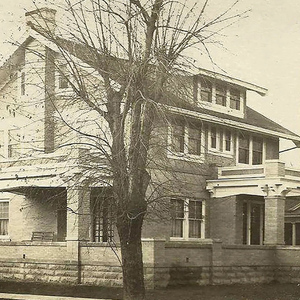*
Hi. Does anyone have a tried and proven method of minimizing sound transmission in party walls of duplexes?
The method my company has used has been the following wall assembly:
2 layers of 5/8″ gypsum board
z-bar (sound channel)
2×4 wall on 16″ centres c/w batt insulation between studs
1″ air gap
2×4 wall 16″ o.c. c/w batt ins.
z-bar
2 layers of 5/8″ gypsum board
Naturally we also stagger any electrical plugs and switches, and use a folded firebreak at the floor plates.
After all of this, our clients are still asking for ‘quieter’ party walls.
Any suggestions?



















Replies
*
Tell 'em not to party.
Other than going to a solid masonary wall with similar attachments they aren't going to get much better than what you've given them.
*Even without the air gap and double walls, you Sound Transmission Class is over 50, which is nearly as high as standard ratings go. I doubt anything more will satisfy clients like these.However, some suggestions. Are the spaces between the joists above and below the room stuffed with insulation as well? Using Homosote instead of gypsum for the inner layers may help. Also, the layout of the rooms may not be right. In other words, are the noisy rooms of the duplexes sharing the common wall? By designing so quiet rooms, such as closets, master bedrooms, etc. share the common wall instead of living rooms sharing the common wall the noise can be reduced.
*I agree with Wayne, try to put closets back to back. Also, with so thorough a system, you make no mention of acoutic sealant. Should be run at all seams of gwb, and at top and bottom of wall, and probably at all outlets, too.You probably already do this, but if not, your wall should run up past the ceiling all the way to the floor slab above.As for the suggestion to use homosote, check with local building codes/inspection. As a shared wall between units, might need a fire rated assembly.
*Might help a little if you staggered the studs. But probably not much.
*Mace:Sounds like you have covered everything, but look for sound 'leaks' in the floor assembly (no continuous joists between units I hope)or ceiling/attic space.CheersAndy
*One time a while ago I helped in the building of a sound studio for a college radio station in East Orange New Jersey, where they built one of the walls slightly out of plumb for sound proofing purposes. has anyone heard of this? Peter
*Thanks for the suggestions everyone. It seems that sometimes the simplest solutions are the best. After numerous heated discussions at our office, we still couldn't come to a concencus on how to make our duplexes quieter. The layout of the floors is/was probably the biggest problem, and we never even considered it!Although its too late to change our last duplex (http://www.alloyhomes.com/projects/1999/9912/index.html) or current duplex (http://www.alloyhomes.com/homesforsale/banfftrail/index.html) we can take action on any future duplexes that we design. If anyone checks out those links, they clearly show the 'loud' rooms side by side (on the main floor anyway).Thanks for the advice everyone.
*One thing I have seen done to soundproof walls here in NYC is the use of sheet lead. I am renovating a loft for a DJ here with a recording studio in the back half. It floats on a pool of mercury . I suppose there are some other, even less healthy and more ridiculous ways, I just haven't seen them yet.Don
*I am finishing a basement bedroom. The floor above it is oak and a great transmission of my 4 year old running aroung. Has anyone discovered an efficient way of sound proofing the floor joists channels?
*mace:I finally found the link I wass looking for when I first read your post.CheersAndyhttp://www.nrc.ca/irc/bsi/85_E.html
*This doesn't help in soundproofing, but it does impact audio reflections (i.e. echoes) in the room. The premise is with all corners square "standing waves" can be created, which are reflected sound transmissions. In a racquetball court you can often hear them as a pinging sound after the ball hits the hall.The issue is the standing waves impact other acoustics in the room, so angling one wall (often several) minimizes this. In a recording studio usually the glass between the studio and the control room is at a decent angle to minimize reflections. One studio I worked at for awhile was called ORA Studios (One Right Angle) as there was, in fact, one right angle in the place. Fortunantly I wasn't the one who had to build the walls.Mike
*Andy,thanks for the link. It addresses exactly what we were debating in my office. (a little dry though, coulda used some colour pictures)I guess it looks like we pretty much were doing a good job with acoustics, but the layout of the floors could have been changed to help the situation. The only other thing we can do is introduce masonry into the wall section. ...that sounds expensive, especially on a spec project. thanks again for the link.mace
One small step for man,
A giant leap for Breaktime.
View Image
Wayne law is right. Your wall is probably somewhere just over STC 50, which may meet code but doesn't satisfy most users.
By adding RSC-1 clips to your res. bar, the wall assembly you use has an STC of 63. Which with a bit of care during construction should translate into a real world 58 or so.
The difference between walls in the low or high 50's is quite remarkable.